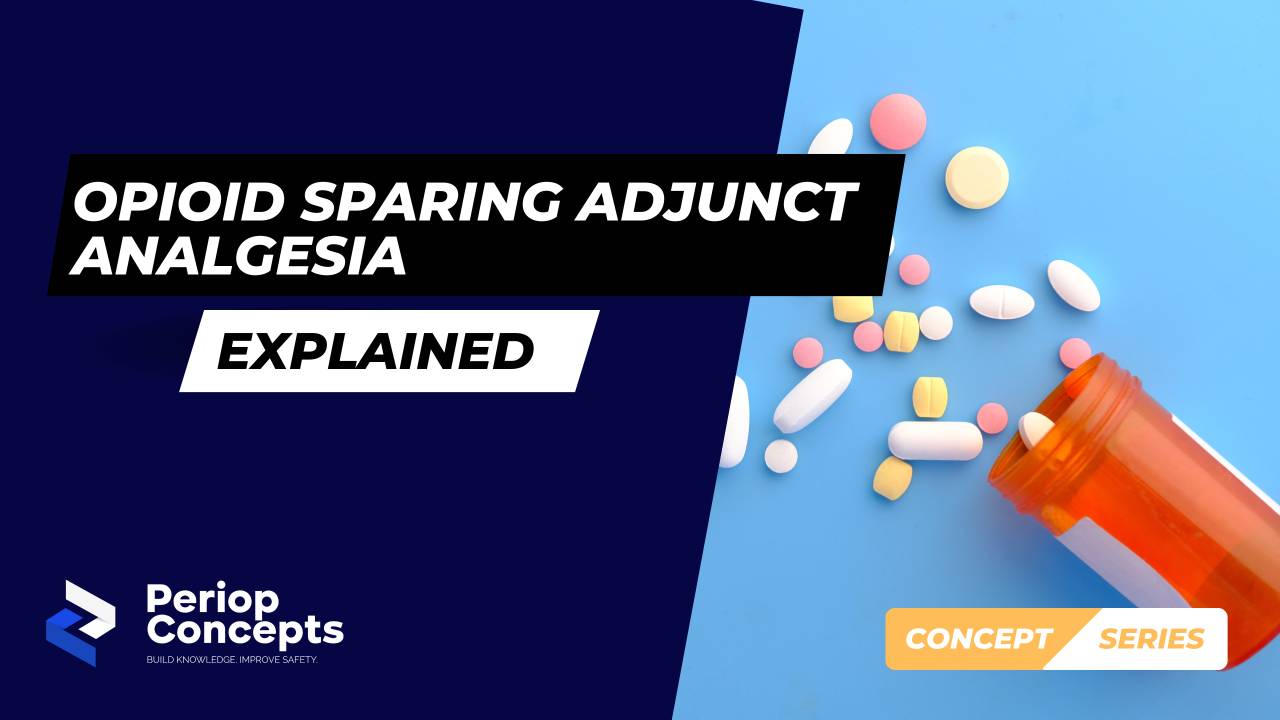Opioid Sparing Adjuncts
Mar 10, 2025
Spare parts - opioid sparing adjuncts
Reducing the amount of opioid used in the perioperative period is beneficial for all patients. From those that may be opioid tolerant already in an effort to manage their chronic pain, to those who are completely opioid naive and receiving them for the first time, reducing the amount used can help to prevent adverse side effects 🚫 and avoid future incidences of tolerance and dependence 🔒.
Enter - opioid sparing adjuncts! 💊 They are essentially what the name suggests, other classes of analgesic agents that create a multimodal approach 🔄 to target pain via a number of different receptors 🧠 and modes of action 🛠️, and to reduce the amount of opioid needed to achieve analgesia. Some will be very familiar and utilised in almost all patients, while others may seem a bit left of centre 🔄 and used in certain circumstances – let’s take a look!
💊 Paracetamol - The exact mechanism of action for paracetamol is still somewhat of a mystery 🕵️♂️, however it has well-documented use in pain management and is considered the first line treatment for pain 🌟 – it should be the first thing to be charted 📝 and the last thing to be ceased! 🚫
💉 NSAIDs - Inflammatory pathways 🔥 and pain pathways are intertwined, hence why anti-inflammatories are so effective in pain management. Caution ⚠️ should be taken in patients who have gastric concerns 🏥 such as ulcers, heart disease ❤️, or impaired renal function 🧑⚕️.
💓 Clonidine - While typically used as an antihypertensive 💊, clonidine exhibits analgesic and anxiolytic effects 😌, which can help to reduce anxiety 🧠 around experiencing pain. Given pain is such an emotional experience 😣, anxiety around pain can amplify pain signals. Patients must have a robust blood pressure 💪 and careful monitoring 👀 in order to receive clonidine.
🌡️ Local anaesthetic agents - Whether it is infiltration into the surgical site 🏥, or a regional catheter placed with an ongoing infusion 💉, local anaesthetics are an excellent mode of reducing opioid requirements. They act on sodium channels ⚡ in the nervous system, creating a roadblock 🛑 to prevent noxious stimuli from reaching the brain 🧠. Close monitoring 👁️ of patients receiving local anaesthetic is required to detect early signs of toxicity ☠️.
💊 Ketamine - as discussed in the previous concept series article! 📚
💊 Tramadol - While technically still an opioid, it has only a weak opioid effect due to its dual mode of action 🔄, and can be useful in reducing the overall amount of opioid used.
⚙️ Magnesium - Also acts as a non-competitive NMDA receptor inhibitor 🧠, with similar analgesic effects to that of ketamine. Generally run as an infusion perioperatively 💉.
💊 Gabapentinoids - There is weak evidence 📉 to suggest efficacy of gabapentinoids such as gabapentin or pregabalin for acute post-surgical pain, however they are thought to have anti-neuropathic properties 💪 and are sometimes used as a pre-medication or for a short-term post-operative course ⏳.
Build Knowledge✅
Improve Safety✅
References:
Ghai, B., Jafra, A., Bhatia, N., Chanana, N., Bansal, D., & Mehta, V. (2022). Opioid sparing strategies for perioperative pain management other than regional anaesthesia: A narrative review. Journal of anaesthesiology, clinical pharmacology, 38(1), 3–10. https://doi.org/10.4103/joacp.JOACP_362_19
Stay connected with news and updates!
Join our mailing list to receive the latest news and updates from our team.
Don't worry, your information will not be shared.
We hate SPAM. We will never sell your information, for any reason.



